Table of Content for the Supreme Court of the United States
2.1. Juridical Review
2.2. Division of Powers
2.3. Point of reference
2.4. Original Jurisdiction vs. Appellate Jurisdiction
2.5. Constitutional Interpretation
2.6. Stare Decisis
2.7. Checks and Balances
2.8. Appointment and Confirmation
2.9. Public Trust and Authenticity
- History of the supreme court of the united states
3.1. Establishment
3.2. Early Years
3.3. Marbury v. Madison (1803)
3.4. Expansion of Power
3.5. 20th Century
3.6. Modern Era
3.7. Current Composition - Challenges of the Supreme Court of USA
- 4.1. Political contradictor
- 4.2. Public Perception
- 4.3. Docket Management
- 4.4. Complex Legal Issues
- 4.5. Resource Constraints
- 4.6. Technological Adaptation
- Advantages
- Conclusion
1. Supreme court of the united states justices
The Supreme Court of the United States is the highest federal court in the United States, and final expositor of the Constitution of the United States.
The court currently consists of nine justices. The Supreme Court of the United States established by Article III, Section 1 of the Constitution. It states that “The judicial Power of the United States, shall be vested in one supreme Court, and in such inferior Courts as the Congress may from time to time ordain and establish. The Judges, both of the supreme and inferior Courts, shall hold their Offices during good Behavior, and shall, at stated Times, receive for their Services, a Compensation, which shall not be diminished during their Continuance in Office”.
2. Key concepts of supreme court of the USA
Some key concepts related to the Supreme Court of the United States are given below
2.1. Juridical Review: Juridical Review refers to the the power to review the constitutionality of laws and executive actions by the Supreme Court. Though this authority is not expressly stated in the constitution but was established by the Supreme Court itself in the milestone case of Marbury v. Madison (1803).
This power of juridical review allows the Supreme Court to fulfill its role as the ultimate interpreter of the Constitution.
2.2. Division of Powers: Division of powers also known as separation of powers refers to the responsibilities and functions of governments separation in different branches or levels of government. In the context of the United States the authority is separated among the three branches of the federal government, which are the executive, legislative, and judicial branches
2.3. Point of reference : The Supreme Court of the United States serves as a point of reference in American law, politics, and society, forming legitimate precept, public policy and cultural standards through its interpretation of the Constitution and resolution of legal disputes.
2.4. Original Jurisdiction vs. Appellate Jurisdiction :
a) Original Jurisdiction: Original jurisdiction refers to when a court hear a case for the first time, typically involving disputes between parties or cases of a specific nature as defined by law. For example Disputes between states or disputes involving public ministers.

b) Appellate jurisdiction: Appellate jurisdiction refers to the authority of a court to review the decisions of lower courts to determine if legal errors were made or if the decision was based on incorrect application of the law. For example, The U.S. Courts of Appeals, Circuit Courts, and the Court of Appeals for the Federal Circuit have Appellate jurisdiction over appealed cases from the U.S. District Courts and certain specialized federal courts
2.5. Constitutional Interpretation : A fundamental aspect of American jurisprudence is the interpretation of the United States Constitution by the United States Supreme Court. the Constitution serves as the supreme law that everyone must follow, providing the framework for the organization of the federal government. Though, it often requires interpretation to address contemporary issues and changing social norms.
2.6. Stare Decisis: The Supreme Court of the United States fundamental principle of the common law legal system is “Stare decisis” meaning “to stand by things decided”. Courts follow their previous decisions when deciding similar cases in the future under the doctrine of precedent. For examples, when the Supreme Court decides a case, its ruling becomes a binding precedent that lower courts are usually bound to follow in future cases with similar facts and legal issues.
Stare decisis guides the Supreme Court in the application and development of legal principles as a foundation of the legal system.
2.7. Checks and Balances: The Supreme Court has the power to interpret the Constitution and strike down unconstitutional laws through which the Supreme Court acts as a check on the powers of the legislature and the executive branch.
2.8. Appointment and Confirmation: According to Article II, Section 2 of the Constitution, the United States Supreme Court Justices are appointed and confirmed. It Says that “ He shall (The President) have Power, by and with the Advice and Consent of the Senate, to make Treaties, provided two thirds of the Senators present concur; and he shall
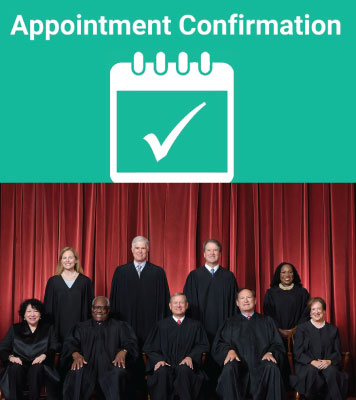
nominate, and by and with the Advice and Consent of the Senate, shall appoint Ambassadors, other public Ministers and Consuls, Judges of the supreme Court, and all other Officers of the United States, whose Appointments are not herein otherwise provided for, and which shall be established by Law: but the Congress may by Law vest the Appointment of such inferior Officers, as they think proper, in the President alone, in the Courts of Law, or in the Heads of Departments.
In short, the President nominate an individual to fill a vacancy on the Supreme Court.Then the nomination is referred to the Senate Judiciary Committee for review. The committee evaluate the nominee’s qualifications, legal expertise, and judicial philosophy.The committee can choose to approve or reject the nomination. The full Senate then votes on whether to confirm the nominee .If confirmed, the nominee becomes a Supreme Court justice.
2.9. Public Trust and Authenticity : The Supreme Court of the United States public trust and authenticity is the crucial part for maintaining the Court’s legitimacy and effectiveness in upholding the law. From 2000 to 2022a survey shows that 40% of the Americans approve of the job the Supreme Court is doing while 53%of Americans disapprove of how the court handles its job.
History of the supreme court of the united states :
The Supreme Court of the United States has a history of over two centuries &is a rich and complex too.
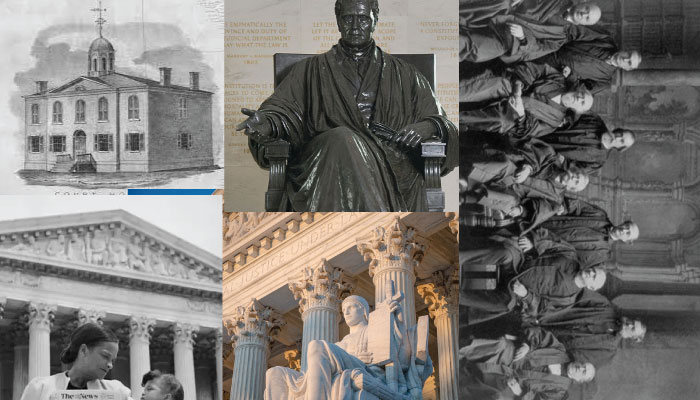
3.1. Establishment : The Supreme Court of the united state was established by Article III, Section 1 on March 4, 1789 and its first assembly was in 1790. According to Article III, Section 1 it states that,
“The judicial Power of the United States, shall be vested in one supreme Court, and in such inferior Courts as the Congress may from time to time ordain and establish.”
Although the Supreme Court is established by the Constitution, Congress is authorized to organize it and make decisions.Congress originally practiced this power in the Judiciary Act of 1789. And by this act the Court wascreated with six justices.
3.2. Early Years : The Supreme Court of usa was first assembled on February 1, 1790, in the Royal Exchange Building at Broad Street opposite Frances Tavern in New York city. later in Philadelphia and now 1 First Street, NE, Washington, D.C., U.S.
3.3. Marbury v. Madison (1803):The case of Marbury v. Madison (1803) was the milestone case that gave power to the Supreme Court to established itself to review the constitutionality of laws and executive actions.
3.4. Expansion of Power : Over the years, the Supreme Court grew in power and influence as it ruled on important issues such as federalism, civil rights, and individual liberties. Eminent cases during this period was Marbury v. Madison (1803), McCulloch v. Maryland (1819), Gibbons v. Ogden (1824), Dred Scott v. Sandford (1857),Schenck v. United States (1919)and many more.
3.5. 20th Century : The Supreme Court played an important role in shaping American society in the 20th century. Racial segregation in public schools was declared unconstitutional in the 20th century, with a landmark decision being the case of Brown v. Board of Education (1954).
3.6. Modern Era : In Modern Era, the Supreme Court has addressed affirmative action and broader issues such as same-sex marriage and the scope of presidential power. The president appoints justices for life with the advice and consent of the Senate, leading to intense political battles over nominations.
3.7. Current Composition : The Current composition or the current Justices of the Supreme Court of the United States are one Chief Justice and eight Associate Justices. Who are
- John G. Roberts, Jr., (Chief Justice)
- Clarence Thomas, (Associate Justice)
- Samuel A. Alito, Jr., (Associate Justice)
- Sonia Sotomayor, (Associate Justice)
- Elena Kagan, (Associate Justice)
- Neil M. Gorsuch, (Associate Justice)
- Brett M. Kavanaugh, (Associate Justice)
- Amy Coney Barrett, (Associate Justice)
- Ketanji Brown Jackson, (Associate Justice)
However, the composition of the Supreme Court can change due to various reason such as retirements, appointments, or other unforeseen circumstances.
4. Challenges of the Supreme Court of USA
4.1. Political contradictor: The courts of USA is not immune to the broader political polarization affecting the United States. The nominations and confirmations of justices can become political as they are appointed by presidents and confirmed by the Senate
4.2. Public Perception : Upholding the Constitution and performing the role effectively depends on public trust. Controversial decisions or perceptions of bias can undermine public trust in the judiciary.
4.3. Docket Management: The court receives thousands of petitions every year but hears only a small number of them. Dealing with its agenda affectively while guaranteeing the goal of significant lawful inquiries and contentions is a continuous test
4.4. Complex Legal Issues: Complex legal questions often Cases brought before the Supreme Court involving complex legal questions and can also have far-reaching implications. Judges must contend with evolving fields, emerging technologies, and societal changes while remaining faithful to legal principles and precedents.
4.5. Resource Constraints: Adequate funding is required for the Court to maintain its physical structure, support its staff and carry out innovative developments that face the challenges of budget constraints and effective management of its resources.
4.7. Technological Adaptation: In this modern era, courts have to adapt to rapid technological changes. Including, managing electronic filing, ensuring cyber security and its processes require a compromise between efficiency and the use of advanced technology.
- Advantages of the supreme court
As the highest judicial authority, the Supreme Court of the United States offers several advantages. Such as it has the power to review the constitutionality of laws and executive actions by the Supreme Court and ensuring its principles are applied consistently across the nation.
The supreme court plays a central role in upholding the rule of law andhas the authority to strike down laws or government actions that violate constitutional rights. The supreme courts decisions have the authority to settle controversial issues & provide clarity on legal questions.
The Supreme Court of the United States plays an important role in safeguarding the principles of democracy, protecting individual rights, and upholding the rule of law. - Conclusion
In conclusion, we can say that The Supreme Court of the United States stands as the apex of the country’s legal framework employing enormous authority in interpreting the Constitution, settling legitimate questions, and maintaining law and order.
The Court plays a significant impact in shaping American culture, progressing social equality, and shielding individual freedoms. The Court’s decisions carry significant weight, laying out points of reference that guide lower courts and shape the direction of the law.


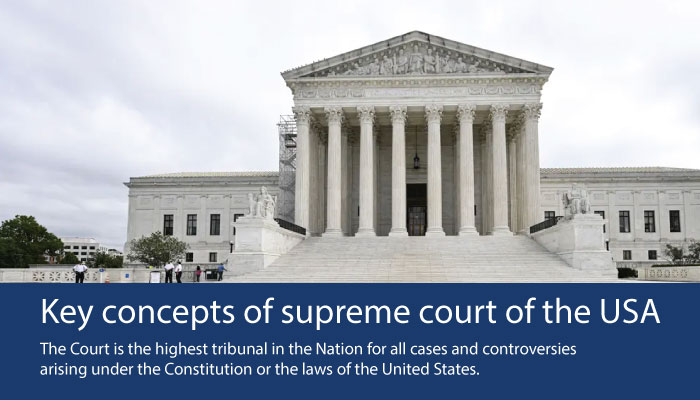
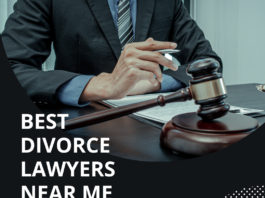
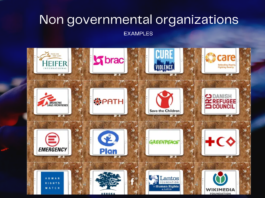

supreme court of the united states